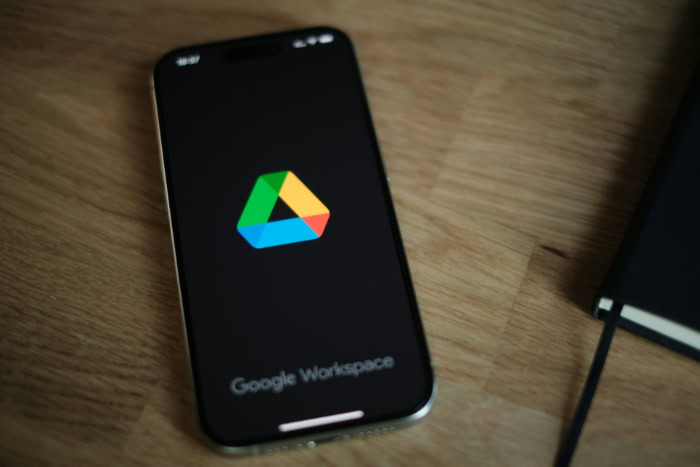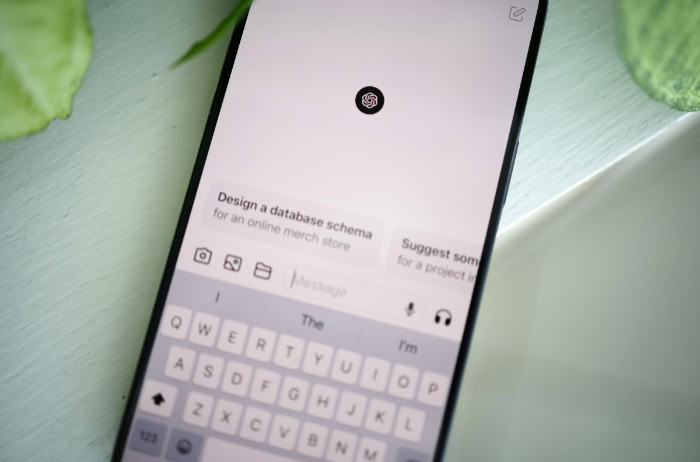Is Google Drive Secure? The Truth About Its Encryption

Google Drive stores a massive collection of the world's personal and business files, but is it truly secure? The answer is complicated; it lies somewhere between Google's powerful built-in protections and its notable security limitations. While every file benefits from strong encryption in transit and at rest, this protection is not absolute.
Google retains access to the encryption keys by default, creating a potential point of failure. Furthermore, the platform's greatest strength, easy collaboration, is also a source of risk through accidental oversharing.
True security on Google Drive requires a practical assessment of its safeguards, its vulnerabilities, and the specific policies needed to protect your information from exposure.
Security Foundations
Google Drive’s security is built upon several core principles that work together to protect user data from unauthorized access. The platform's default settings provide a strong baseline of defense by automatically encrypting information, establishing private access controls from the moment a file is created, and housing all data within Google's physically and digitally secured infrastructure.
These integrated protections form the fundamental security posture for all files stored in Google Drive and Google Workspace.
Default Encryption Model
Google automatically encrypts all data stored in Drive. Encryption is applied both when data is in transit and when it is at rest.
When you upload or access a file, your data is protected in transit using Transport Layer Security (TLS), which prevents eavesdropping as it travels between your device and Google’s servers. Once your files are stored on Google's servers, they are protected at rest with 256-bit AES encryption.
This server-side encryption means that the files are unreadable on the physical storage media without the correct decryption keys, which Google manages.
Private by Default Access
Every file and folder you create in Google Drive is private by default and only accessible to you. You have complete control over who can view, comment on, or edit your files.
Access is granted only when you explicitly share a file with specific people or create a shareable link. This model ensures that your information is not publicly exposed by accident.
Google’s privacy policy also outlines its commitments to not use your Drive content for advertising purposes, further reinforcing the private nature of your stored data.
Hardened Infrastructure and Operations
Your files are stored within Google’s global network of highly secure data centers. These facilities are protected with multiple layers of physical security, including biometric access controls, interior and exterior surveillance, and dedicated security staff.
Beyond physical protection, the infrastructure runs on a custom-hardened operating system and server hardware with a secure boot process. Google’s operations teams monitor the platform around the clock to detect and respond to threats, ensuring the integrity and availability of the services that power Google Drive.
Known Limits and Risks

While Google Drive provides a strong security foundation, it is not without its limitations and potential risks. The platform's default configuration involves specific trade-offs between convenience and absolute security that users and organizations must recognize.
The most significant vulnerabilities stem from the encryption model, the ease of file sharing, and the inherent scope limitations of automated threat scanning.
Server-Side Encryption and Its Limits
By default, Google Drive uses server-side encryption, which means Google manages the encryption keys used to protect your data at rest. While this protects files from being accessed if the physical storage media were compromised, it also means that Google technically has the ability to decrypt your files.
There is no default end-to-end encryption, a method where only the user holds the decryption keys. For organizations that require a zero-access security model where the service provider cannot access the data under any circumstances, this is a significant limitation.
An alternative, client-side encryption (CSE), is available but must be proactively enabled and configured by the organization.
The Risk of Accidental Oversharing
Google Drive’s powerful collaboration features can also be a source of data exposure. The primary risk comes from link-based sharing, specifically the “Anyone with the link” setting.
While convenient, this setting creates a publicly accessible URL that can be easily shared, forwarded, or even discovered by web crawlers if posted online. This can lead to the unintentional exposure of sensitive personal or corporate information.
Organizations must establish strict policies that discourage the use of public links and instead promote sharing with specific, named individuals to maintain control over who can access the data.
Malware and Phishing Scan Limitations
Google Drive automatically scans files for malware and phishing threats upon upload, but this protection has practical limits. The scanning process is typically restricted to files under a certain size, meaning very large files may not be fully analyzed.
Furthermore, automated scanners may not always detect sophisticated or novel threats, such as zero-day malware. Relying solely on Google’s native scanning capabilities is insufficient for high-security environments.
Organizations should complement Drive's built-in protections with endpoint security on user devices or dedicated cloud security tools to provide more comprehensive threat detection.
Practical Hardening Steps
Users and administrators can significantly improve the security of their Google Drive environment by taking proactive measures. Beyond relying on Google's default protections, implementing specific security practices for account access, file sharing, and regular monitoring can dramatically reduce the risk of data exposure and unauthorized access.
These steps transform Drive from a generally secure platform into a hardened repository for your information.
Strengthen Account Authentication
The single most effective action to protect your Google account is to move beyond password-only logins. You should enforce 2-Step Verification (2SV), also known as two-factor authentication, which requires a second form of verification in addition to your password.
A simple text message or a prompt from the Google app on your phone can prevent access even if your password is stolen. For the highest level of security, adopt phishing-resistant hardware security keys.
Devices like a Titan Security Key or YubiKey require physical possession to approve a login, making it nearly impossible for remote attackers to compromise your account. For those at high risk of targeted attacks, Google’s Advanced Protection Program bundles these and other stringent security settings into a single configuration.
Implement Secure Sharing Practices
Controlling how files are shared is essential to preventing data leaks. Configure your sharing settings to be Restricted by default, ensuring that new files are always private until you decide to share them.
When you do grant access, share directly with specific user email addresses instead of using the “Anyone with the link” option. This practice ensures that only authenticated users can view or edit your content.
For collaborations that are temporary, apply time-bound access by setting an expiration date on a user’s permission. Once the date passes, their access is automatically revoked, eliminating the risk of lingering, forgotten permissions.
Regularly Monitor Account Activity
Maintaining security is an ongoing process that requires regular attention. Periodically use Google’s Security Checkup tool to review your security settings, see which devices are logged into your account, and manage third-party apps that have access to your data. It is also important to be aware of the security status of individual files.
You can review the activity details on important documents to see who has accessed them and when. Regularly monitoring for unusual activity, such as unexpected file access from an unfamiliar location, allows you to detect and respond to potential security issues quickly.
Enterprise Controls and Compliance

For organizations that manage sensitive or regulated information, Google Workspace provides a suite of advanced administrative controls that go far beyond the standard security features available to individual users. These enterprise-grade tools are designed to help businesses enforce data protection policies, achieve a higher level of security, and meet complex regulatory obligations.
Implement Client-Side Encryption
Organizations requiring absolute control over their data can enable client-side encryption (CSE). Unlike Google's default server-side encryption where Google manages the keys, CSE ensures that files are encrypted on the user's device before being uploaded to Google Drive.
The organization maintains exclusive control over the encryption keys through an external key management service. This creates a zero-access environment where Google has no technical ability to decrypt or access the file content.
CSE is a critical tool for businesses that must comply with strict data sovereignty rules or internal policies that forbid third-party access to unencrypted data.
Apply Data Loss Prevention Policies
Google Workspace includes Data Loss Prevention (DLP) capabilities to help organizations automatically prevent the exposure of sensitive information. Administrators can create DLP rules that scan the content of files in Google Drive for specific data patterns, such as credit card numbers, social security numbers, or internal project codes.
When a match is found, the system can automatically take action, such as blocking the file from being shared externally, warning the user, or sending an alert to an administrator. Detailed audit logs and monitoring reports provide administrators with visibility into how data is being used and shared, which is essential for detecting policy violations and conducting security investigations.
Align with Compliance Frameworks
Google designs its infrastructure and services to comply with a wide range of global standards and regulations. The platform undergoes regular independent audits to verify its alignment with frameworks such as ISO 27001, a standard for information security management.
For organizations in specific sectors, Google offers agreements and configurations to support compliance with regulations like HIPAA for healthcare data, FedRAMP for U.S. government workloads, and FERPA for student educational records. It is important to note that simply using Google Drive does not guarantee compliance.
An organization must sign the appropriate agreements, such as a Business Associate Agreement (BAA) for HIPAA, and configure its policies and controls correctly to fulfill its own legal and regulatory responsibilities.
Decision Guide for Suitability
Determining if Google Drive is appropriate for your needs requires matching the platform’s security features to the sensitivity of your data. A one-size-fits-all approach to security is ineffective; the right configuration depends entirely on the type of information you are storing and the specific risks you face.
General personal files have different requirements than confidential corporate data or information governed by strict regulations.
For General Collaboration and Personal Use
For most everyday activities, such as personal file storage and non-regulated business collaboration, Google Drive's default protections are generally sufficient. The combination of server-side encryption for data at rest and in transit provides a strong security baseline.
However, this level of security is only effective when paired with responsible user behavior. Activating strong authentication like 2-Step Verification and practicing safe sharing habits, such as avoiding “Anyone with the link” permissions, are essential components of this approach.
When these user-side measures are in place, the platform offers a secure environment for common, non-sensitive data.
For Highly Sensitive or Confidential Data
When handling information like trade secrets, intellectual property, or other highly confidential materials, you should not rely on Google's default security model. The fact that Google manages the encryption keys means a zero-access model is not guaranteed. For these situations, you must implement additional layers of protection.
The most robust solution within the Google ecosystem is client-side encryption (CSE), which ensures files are encrypted before they leave your device and that only you control the keys. Alternatively, you can pre-encrypt files using third-party software before uploading them to Drive.
Both methods are essential for meeting zero-trust security requirements or data sovereignty rules that mandate control over encryption keys.
For Regulated and Compliance-Driven Data
Storing data subject to regulations like HIPAA, FERPA, or FedRAMP in Google Drive is possible but requires specific administrative actions. Simply using the service does not confer compliance.
Your organization must first enter into the necessary legal agreements with Google, such as a Business Associate Agreement (BAA) for healthcare data. Following that, you must correctly configure and enforce enterprise-level controls, including Data Loss Prevention (DLP) policies and strict access rules.
The responsibility for meeting regulatory obligations rests with your organization, which must leverage Google's tools to build a compliant environment before any regulated data is stored or shared.
Conclusion
Google Drive can provide a secure environment for many individuals and businesses, but its safety is not automatic. For general use, the platform's standard protections, which include encryption of data in transit and at rest, are effective when paired with vigilant user practices like strong, phishing-resistant authentication and restrictive sharing policies.
The most significant limitation to acknowledge is the default server-side encryption model, which leaves Google in control of the decryption keys. This arrangement is unsuitable for organizations with zero-trust requirements or those handling highly sensitive information.
In such cases, security depends on implementing advanced controls like client-side encryption, configuring Data Loss Prevention rules, and establishing the necessary compliance agreements to meet regulatory duties.


